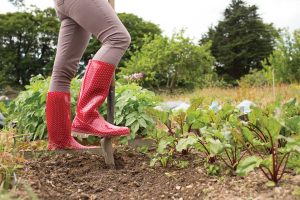Soil Savers: 8 tips to improve soil health
03 Mar 2018
Mikl Brawner, co-owner of Harlequin’s Gardens in Boulder, offers these ideas to improve soil health.
➊ Minimize soil disturbance, like plowing, tilling and overgrazing. When soil is turned, the fungal networks are broken and carbon is exposed to oxygen, which is then oxidized and returned to the atmosphere as carbon dioxide. Research shows that in the last century, we have burned up 90 percent of the organic matter in our soils. It’s now recognized that carbon is the key driver of the nutrient-microbial recycling system.













